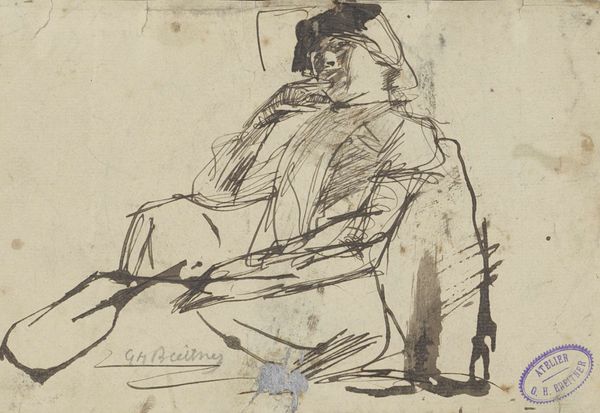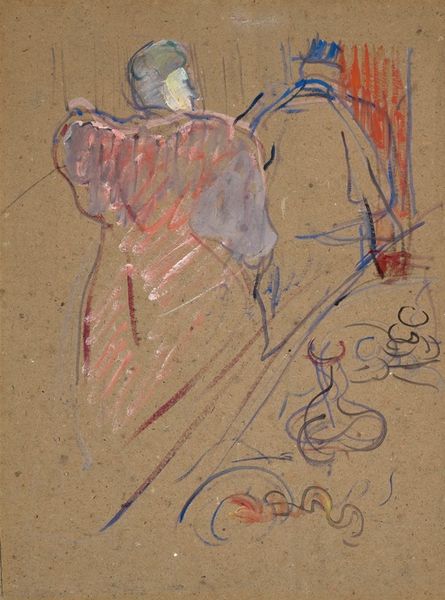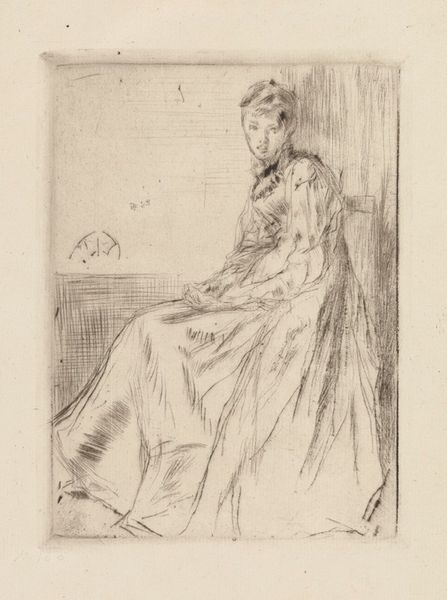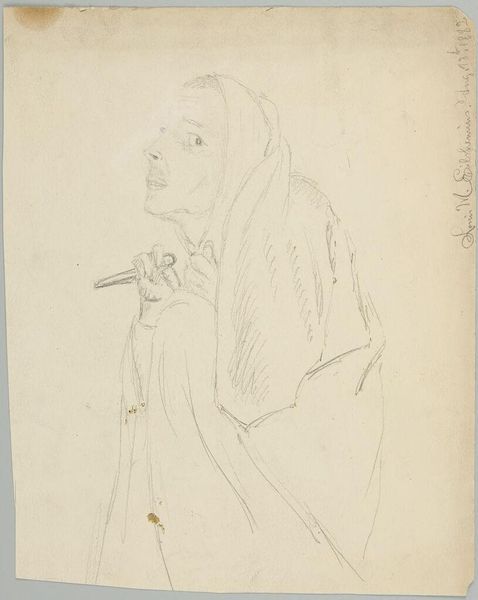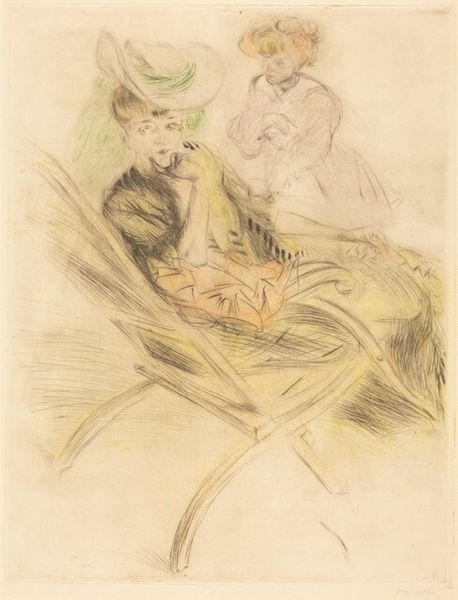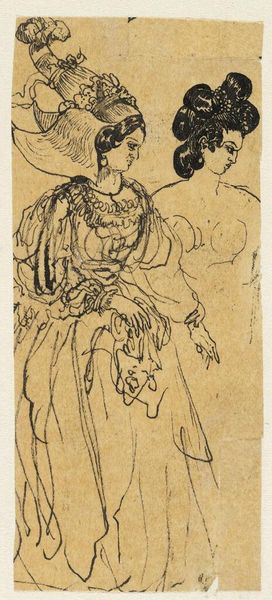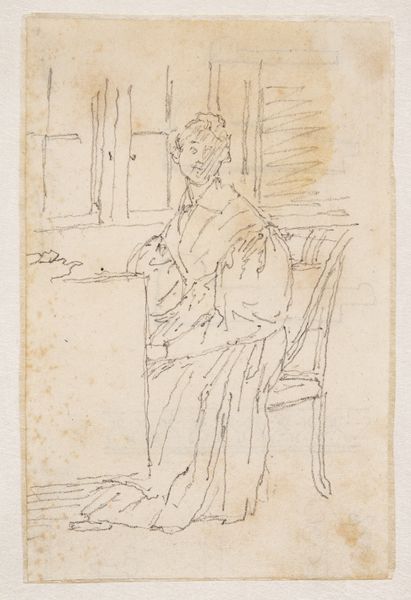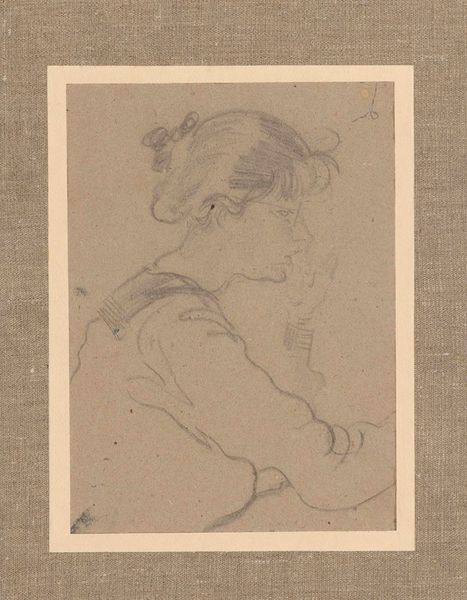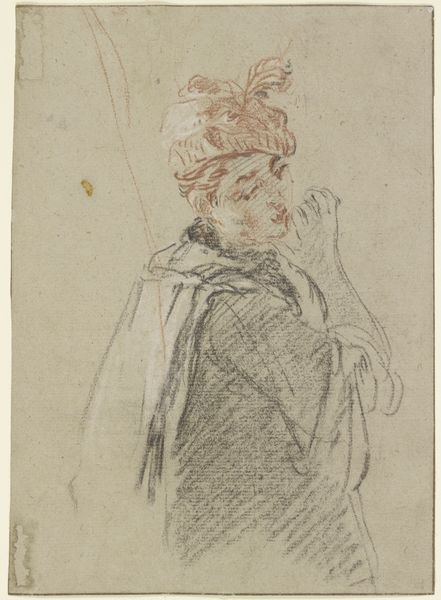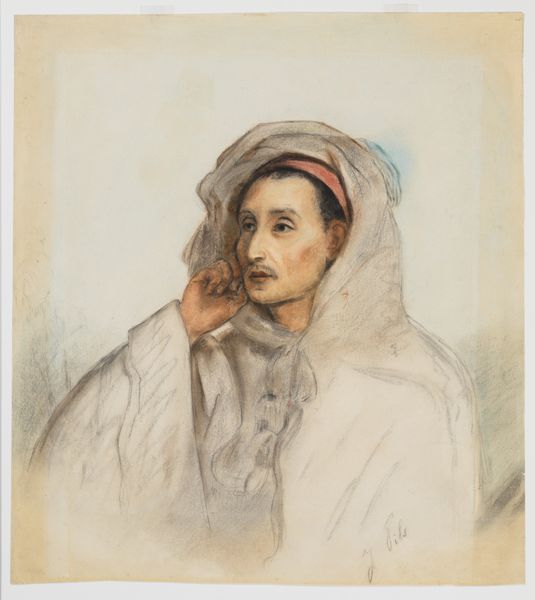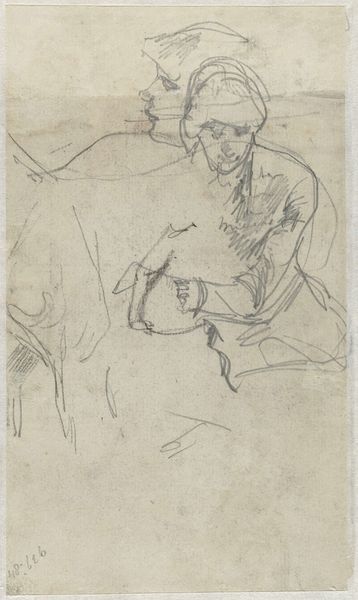
drawing, watercolor, ink
#
portrait
#
drawing
#
ink painting
#
figuration
#
watercolor
#
ink
#
orientalism
#
genre-painting
#
watercolor
Copyright: Public Domain: Artvee
Curator: We’re looking at Théodore Chassériau's “Jewish Woman of Algiers Seated on the Ground,” created around 1846, using watercolor and ink. The delicate washes and seemingly unfinished quality gives it such an evocative, ephemeral feel, doesn’t it? Editor: It does. I'm immediately struck by the artist’s obvious interest in the textures and patterns. You see the suggestion of the fabrics of her clothing—the draping folds, the embroidery, the ornamental headband... There is such careful mark-making. Curator: Absolutely. The materiality speaks volumes. Consider how the watercolors, so easily blending, emphasize the fluidity of cultural exchange inherent in Orientalist art. Chassériau, although of French-Dominican descent, participated in France's colonial gaze on North Africa. It is very apparent in the choice of medium itself. Editor: It's interesting that you mention the colonial gaze. Looking at the materiality – the thin paper, the quick strokes – suggests a study, perhaps for a larger work. Was it intended as a quick anthropological observation, a way of documenting the perceived exotic "other?" This connects to broader trends of colonialism and ethnographic documentation. Curator: Perhaps. However, the composition suggests something more complex. Her gaze directly confronts the viewer. Her hand supporting her head could represent contemplation and melancholy. It transcends mere documentation; there’s a strong element of psychological depth. The way he depicts the fall of light enhances her face’s structure, creating this quiet intimacy. Editor: But is it a true intimacy, or a projection? How might the availability of materials influence how the subject is perceived and portrayed? In a market fueled by orientalism, the ready availability and affordability of watercolor on paper might simply align with demand for these kinds of depictions, regardless of deeper intentions. The materiality thus influences the context significantly. Curator: An interesting point! Ultimately, I’d say Chassériau presents a powerful aesthetic vision. The use of line and wash, the tonal harmony... Editor: ... all shaped, undeniably, by socio-economic forces that determine which materials are used and who gets depicted and consumed. Curator: Yes, precisely! Both approaches illuminate essential aspects of Chassériau's delicate portrayal. Editor: And show how interconnected those aspects truly are.
Comments
No comments
Be the first to comment and join the conversation on the ultimate creative platform.



